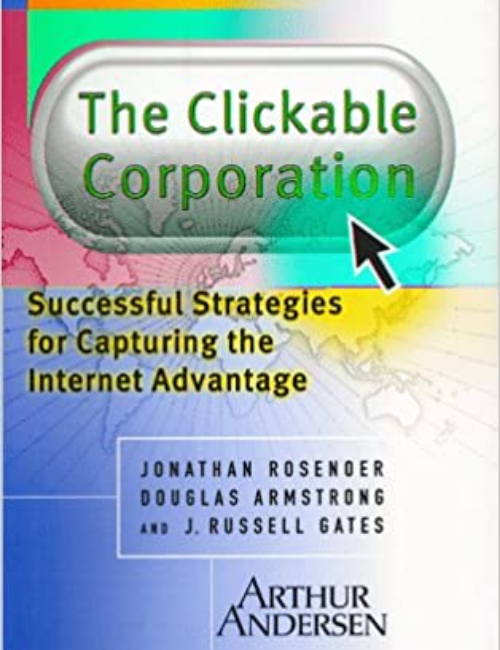I bought this book in 2009 about the time I started writing in this blog. I was aiming to make my business of selling pre-loved books online bigger and better. The thought in my mind was that reading this book would help me make my website better, or make me better understand what was needed. In the end it didn’t as I only just read it this year. It’s about a number of companies that decided putting their business online was the way to go. They committed themselves very early, this book was published in 1999; it was the year I got my first laptop. This book is divided up into chapters discussing three different businesses in each chapter.
What I found is a book steeped in history. There are still some points to be pulled out and applied to many businesses, but for me it was the history. I wrote notes to be able to refer back to later. My second note is in a paragraph about travel data. Nowadays travelers are quite eager to trawl the internet to find bargains but back then it was just the beginning. This was in the days of 56K modems when you kept the data as low as possible because it took forever to download anything. I can’t imagine researching a holiday with that kind of speed.
The next note I’ve made talks about developing niches that offer depth rather than breadth. In other words, do something really, really thoroughly and well, don’t branch out. I could drop in my current book here (it’s about Captain Cook, I’ll write a few words about it in due course) and talk about Captain Cook. He did navigation very thoroughly, he made a practice of being exceptionally good at it.
Setting up a company on the internet is the same as setting up the company in a different country. You need to know the rules, the language and everything you can before you go into it. Don’t do what I do which is to dive straight in and continue researching while setting things up. Research first, give yourself a deadline to learn all you feel you need to know and stick to that deadline. Then you can get set up. There will be things you will learn on the fly, but learn the bulk of things first. You’ll do a better job that way.
Rereading the page marked with my next note blew my mind. Cisco is a world wide IT company. This page talks about Cisco’s e-commerce program in August 1996. The page mentions IP, or Internet Protocol networks. ‘With data, voice, video, and who-knows-what-else residing on the IP network…’ I stopped and reread that, I’ll probably reread it again. We were meant to be going to New Zealand for WorldCon this year, in fact, we would have returned about a week ago if Covid hadn’t intervened. This year WorldCon went virtual. For five days it was run out of Discord (text, voice and possibly some video), the WorldCon website (text and lots of links), Zoom (video conferencing) and other programmes. I think 2,400 people logged on during the five days. If we were still in the days of 56K Modems this would not have been able to happen. In real time I was able to see and talk to people in countries all over the world, I wasn’t keeping track of which countries, but the UK, Germany, India and New Zealand would have been part of that list. That page I mentioned at the beginning of this paragraph? I read that directly after WorldCon, the juxtaposition of a virtual WorldCon happening just before I read this page mentioning the 56K Modem illustrated how far we’ve come with regards to technology.
There is a lot more I could talk about with this book. It does include some business strategies and also some history about the online world very early on. The internet has moved on so, so much since the days of Geocities, as has the look of websites. Some of that progress is good and some not so good. This book is now hard to get as it is very dated. Good luck finding a copy if you find yourself intrigued.

